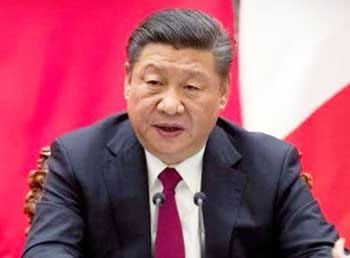INVC NEWS
New Delhi : The field of agriculture has witnessed a revolutionary transformation with the integration of artificial intelligence and satellite technology. One of the most remarkable advancements in this domain is the satellite mapping of crops, a groundbreaking initiative that promises to revolutionize the way we approach agricultural practices. By harnessing the power of satellites and cutting-edge AI algorithms, we can now gain invaluable insights into agricultural production, crop areas, weather patterns, natural calamities, soil quality, and much more.
Unraveling the Advantages of Satellite Mapping in Agriculture
Satellite mapping of crops, a joint endeavor by the National Crop Forecasting Center and ISRO (Indian Space Research Organisation), is set to transform the landscape of agriculture. With its ability to map ten crucial crops, including paddy, wheat, pulses, mustard, jowar, cotton, pigeon pea, jute, and sugarcane, this technology promises to be a game-changer for farmers and the entire agricultural sector.
1. Accurate Estimations of Agricultural Production
Traditionally, estimating agricultural production was a laborious and error-prone process, often leading to discrepancies in crop forecasts. However, with the advent of satellite mapping, this hurdle is overcome. By analyzing satellite imagery and employing advanced AI algorithms, accurate estimations of crop yield can be obtained. This real-time data empowers farmers with vital information to make informed decisions about crop planning and marketing strategies.
2. Precise Crop Area Identification
Knowing the exact extent of crop areas is fundamental for agricultural planning and resource allocation. Satellite mapping allows us to pinpoint the precise locations of various crops across vast stretches of land. This valuable information can aid authorities and policymakers in implementing targeted agricultural schemes and ensuring optimal resource distribution.
3. Mitigating the Impact of Natural Calamities
Natural calamities like floods, droughts, and cyclones pose significant threats to agricultural productivity. With satellite mapping, the early detection and monitoring of such events become possible. Timely alerts can be sent to farmers and district administrations, enabling them to take proactive measures to safeguard crops and minimize damage.
4. Optimizing Soil Quality Management
Understanding soil quality is vital for enhancing crop productivity. By leveraging satellite data, we can gain valuable insights into soil characteristics, nutrient levels, and moisture content. Armed with this knowledge, farmers can adopt precision agriculture techniques, tailoring their practices to suit the specific needs of the soil and crops, leading to improved yields and sustainability.
5. Empowering Weather Forecasting in Agriculture
Accurate weather forecasts are indispensable for successful farming. Satellite mapping enables us to analyze weather patterns and predict upcoming climatic changes with a high degree of accuracy. This information can guide farmers in deciding the appropriate time for planting, harvesting, and other critical farming activities, ultimately boosting productivity.
The Impact on Agriculture: A Paradigm Shift
The integration of satellite mapping and artificial intelligence in agriculture marks a significant paradigm shift. It streamlines agricultural practices, enhances productivity, and ensures more sustainable and resilient farming methods. This transformation also facilitates the shift towards data-driven decision-making, fostering a new era of precision agriculture.
1. Increased Efficiency and Cost Savings
Satellite mapping minimizes the need for manual surveys and physical inspections, saving valuable time and resources for farmers. The technology enables remote monitoring and data collection, thereby reducing operational costs. As a result, farmers can maximize their return on investment while optimizing resource utilization.
2. Optimal Resource Management
With precise crop area identification and soil quality information, farmers can tailor their resource allocation to match the specific needs of each crop and region. This leads to more efficient use of fertilizers, water, and other essential inputs, reducing wastage and minimizing environmental impact.
3. Enhanced Food Security
As satellite mapping provides accurate estimations of agricultural production, governments can develop more robust food security strategies. By anticipating potential shortages or surpluses, they can take proactive measures to stabilize prices and ensure food availability for the population.
4. Sustainable Agriculture Practices
Sustainability is a growing concern in the agricultural sector. Satellite mapping empowers farmers to adopt sustainable practices such as conservation agriculture, precision irrigation, and crop rotation. These practices promote soil health, biodiversity, and long-term environmental sustainability.
5. Empowering Smallholder Farmers
Smallholder farmers often face challenges due to limited access to information and resources. Satellite mapping bridges this gap by providing crucial data and insights, leveling the playing field and empowering smallholders to make informed decisions for better outcomes.
Conclusion
The convergence of artificial intelligence and satellite technology to enable crop mapping represents a turning point in modern agriculture. The numerous benefits, ranging from accurate crop estimations and precise area identification to improved weather forecasting and sustainable practices, underscore the transformative power of this innovation.
As we embark on this new era of data-driven agriculture, it is crucial for governments, agricultural institutions, and stakeholders to collaborate in harnessing the full potential of satellite mapping. By embracing this technology and integrating it into our agricultural practices, we can build a more resilient, efficient, and sustainable future for farming.














[…] Full Text https://www.internationalnewsandviews.com/ai-and-satellites-join-forces-mapping-crops-for-a-sustaina… Translate Full Text […]